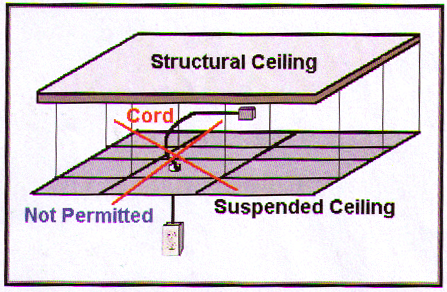UL & CSA
Most people are usually confused what UL is or what is required to be UL Listed, Approved or Classified. Most assume that UL is a Government Mandated Requirement that Manufactures have to adhere to, which it is not.
UL is a Private, Not for Profit Nationally Recognized Third Party Testing Facility abbreviated NRTL. The Government run OSHA approves NRTLs based on a menu of safety test standards for which each becomes qualified. Although UL is one of the eldest there are at least a dozen or so recognized Independent Testing Facilities that Manufactures can use. Some examples include: CSA (Canadian Standards Association), in addition to TUV Rhineland, ETL, and TUV America but not limited to those Families. Each provides it’s own “stamp of Approval “for compliance, that States recognize as a legitimate NRTL.
NEC Codes
Many people are also often confused as to the difference between a Code and a Standard. A Code is a Mandatory Conformance requirement that is administered by Local, State, or Federal Authorities, whereas a Standard is a Voluntary, agreed upon evaluation method or level of Performance recognized as desirable. Codes tend to use words like, “Shall, Must or Will”. Standard use words like “Call or Maybe”.
The Plenum
The word describing the “Plenum”, in A/V Terms is not The Plenum, but the Air Space above the Ceiling Tiles. An actual Plenum is a Compartment such as a Duct for handling Air Distribution” and for the Installation of A/V Equipment is never used.
UL 2043 UL Standard for Fire Test for Heat and Visible Smoke Release for Discrete Products and their Accessories installed in Air Handling Spaces Published 8/2008
This is a fire test method for determining the fire performance response of discrete products (Electrical Equipment) intended to be installed in Air Handling spaces, such as Above Suspended Ceilings. These products are subjected to an open Flame ignition source and evaluated using a product calorimeter.
The purpose of this test is to determine the rate of Heat Release and the rate of Smoke Release of the burning product samples as they relate to the requirements for fire resistant and low smoke producing characteristics in accordance with the provisions of the National Electrical Code NFPA 70*.
This Test Method does not provide information on the performance of products or other fire test conditions. This test does not investigate the toxicity of the products of combustion.
This test does not cover the Construction, Electrical or other performance requirements of the product.
As our Plenum Equipment Boxes are solely made of Aluminum, it is not necessary for them to be either Tested or Marked with the UL. Symbol
*National Electrical Code NFPA 70 is a regionally adopted Standard for the safe installtion of Electrical Wiring and Equipment in the United States. The NEC while having no legally binding regulation as written, can be, and is often adopted by States, Municipalities and Cities.
Installation of the Nigel B Design Plenum Equipment Boxes
As both our Standard and Extra Large Plenum Equipment Boxes are made of Aluminum UL requirements do NOT require us to display a UL Logo on our Products.
Because of their construction Material (Aluminum) all our Plenum Equipment Boxes exceed the requirements of UL 2043
Although there is a Power Receptacle inside these Boxes they are already UL listed under VL 194 exceeding the Flammability requirements of UL, and again are not required to undergo further testing.
NEC Guidelines
Researching various State and Local Requirements, shows that not everyone incorporates every recommendation of the NEC. However System Designers and Installers will find that Nigel B Design Plenum Equipment Boxes Installation Guidelines adhere to the relevant recommendations of the NEC and Installers should therefore not encounter any problems when installing our Plenum Equipment Boxes.
The main Guidelines that Users should be aware of include: 400-8(5) shown below.


The main requirements that Building Inspectors usually look for are:
- Power Receptacles installed and exposed above the Ceiling Tiles.
- Exposed Cabling not Plenum Rated.
- Exposed Electrical Connections.
- Flexible Cords that run above the Ceiling Tiles to Equipment below that are used to Power Equipment .
By following the methods we employ and recommend, that include installing all Wiring inside Conduit or running all Wiring inside the 1/8” Thick Steel Pole used to support the Projector or other Equipment will find these methods avoid any conflict.
